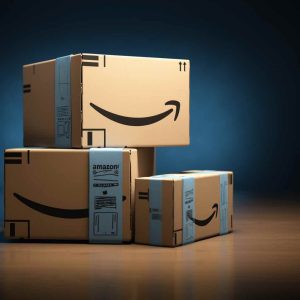Amazon Vendor Central is a selling model offered by Amazon where you (the seller) sell directly to Amazon. In this scenario, you are a first-party seller. You’re acting as a supplier, selling in bulk to Amazon, who then resells your products to consumers. Registration on Vendor Central is by invitation only.
A tell-tale sign that a company is selling through Vendor Central is the phrase, “Ships from and sold by Amazon.com” on a product detail page.
What Is Amazon Vendor Central?
Vendor Central is an invite only program primarily utilized by larger brands who don’t want any of the headache associated with selling on Amazon. Or maybe their business model is that of wholesale, and not third-party direct-to-consumer. In this scenario, Amazon not only stores the items in their warehouses, but also fulfills them for customers on your behalf. Your only responsibility in the whole supply chain is selling your inventory to Amazon in bulk.
Amazon not only controls the fulfillment, but also the pricing of your product with the vendor central model. This can be a pro in the sense that you don’t have to worry about price adjustments, but also a major con if you need to push a change urgently.
Multiple advertising options via AMS (Amazon Marketing Services) will also be open to all of the robust Amazon advertising features available as an Amazon seller. Although this is not a significant advantage like it was in the past. In 2023 and beyond, most sellers can qualify for all of the different ad types if they satisfy certain metrics. Both vendor central accounts, and seller central accounts have robust ads toolkits.
The same applies to A+ content where your typical product description goes. Vendor Central brands gain access to an additional section titled “About The Manufacturer.” Here they gain additional real estate to tell their brand story and appear more credible to the consumer. Again, this is becoming less and less significant, as Amazon continues to roll out these more robust features for third-party FBA sellers.
Amazon Vendor Central Pros
Once upon a time there were a whole host of benefits associated with the Amazon Vendor Central platform. Those have diminished significantly over time. These mainly included advertising benefits and additional content sections. With the substantial growth of third-party selling though, Amazon has really shifted focus to enhancing the FBA experience more and more.
At this point the main advantages gained with Vendor Central are potentially increased trust from buyers, and a more simplified business model.
Brands are able to operate and sell on Amazon just as they would with any other wholesale account. This allows sellers to expand their product line onto Amazon without really changing their existing business in any way.
Amazon Vendor Central Cons
MAP Pricing Control: Brands who sell on multiple marketplaces and/or in physical retail need to adhere to MAP pricing. MAP pricing ensures that no one “storefront” has a price advantage or is undercutting the other retail price. Amazon may not always abide by this and it can cause major issues with your other retailers.
For example:
If you sell your spatula on Amazon for $14.99, but sell the same spatula at Walmart for $13.99, this is a violation of the Minimum Advertised Pricing (MAP) guidelines.
Product Detail Page Control: Piggybacking off of lack of pricing control…you also have lack of control over detail page optimization. The “secret sauce” to getting your products hyper-visible organically in the search results, then converting buyers at a high percentage heavily relies on how well your listing is optimized. Both from an SEO standpoint and a conversion aspect. It’s very challenging to get the most out of the Amazon platform when you’re relying 100% on them. If you have Amazon selling experts internally, or externally with an Agency, you can almost always have more growth potential.
Potential Decreased Profit Margins: When using Seller Central, fees are based on a pay-as-you-go model with individual sellers charged 0.99 cents per item and professional sellers charged $39.99. In contrast, Amazon Vendor Central may seem cost-free since Amazon is the purchaser, but vendors are responsible for payment later. With wholesale pricing in place, Amazon typically requires vendors to pay 4% to 10% for slotting and marketing costs. As sales increase, Amazon may also ask for additional fees for account support or marketing.
This becomes trickier and more costly if you sell Internationally and have to account for VAT tax and International shipping into the Amazon warehouses.
Key Takeaways
At the end of the day, there are really only two scenarios where we see Amazon Vendor Central as a good fit for you.
- If your business already operates on wholesale terms - You won’t have to change anything to expand onto Amazon
- If you don’t have the staff internally to operate an Amazon Seller Account, and have no interest in hiring a team externally.
We have helped several brands make the transition from Vendor Central, to Seller Central, as a third-party seller. In fact, one of our long-term brand partners GrowlerWerks was able to cut costs and increase sales by 30% by making the switch.




